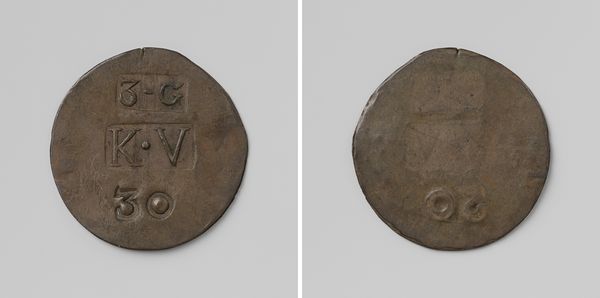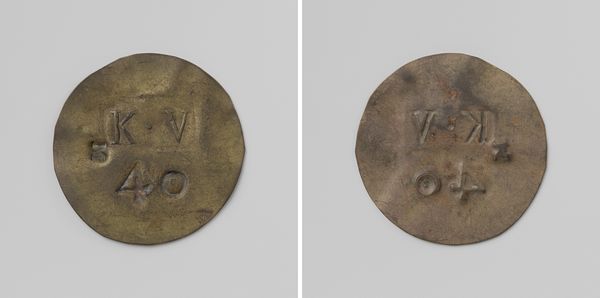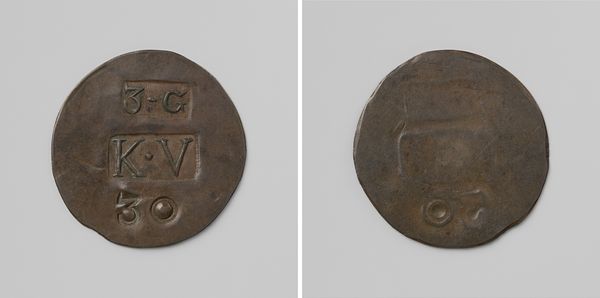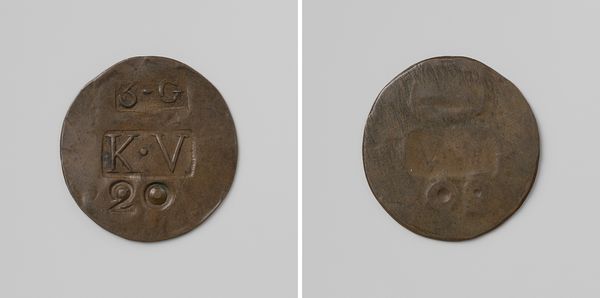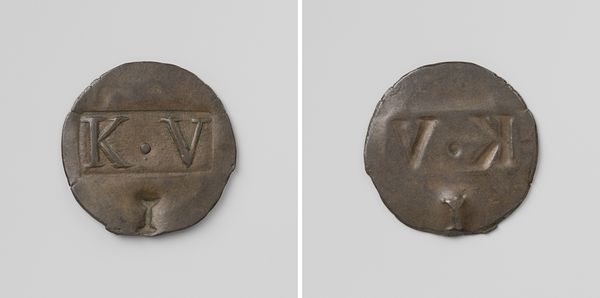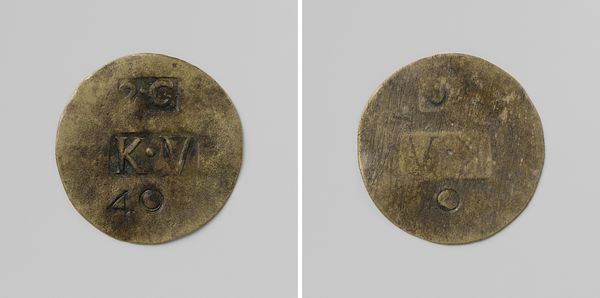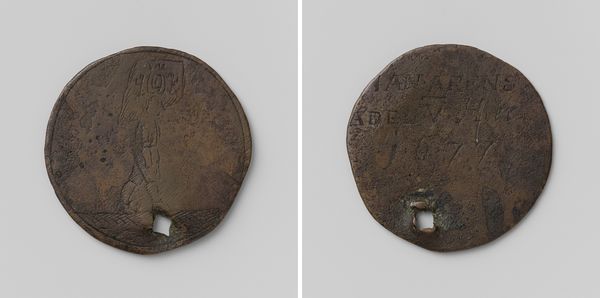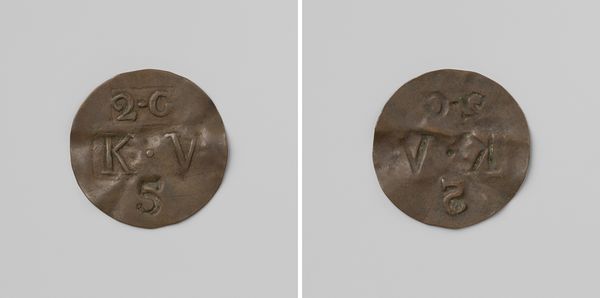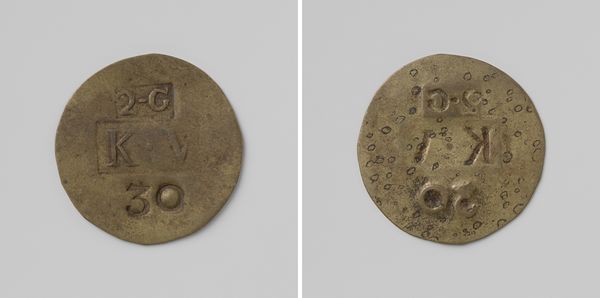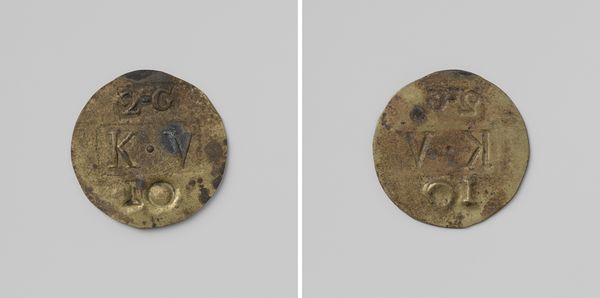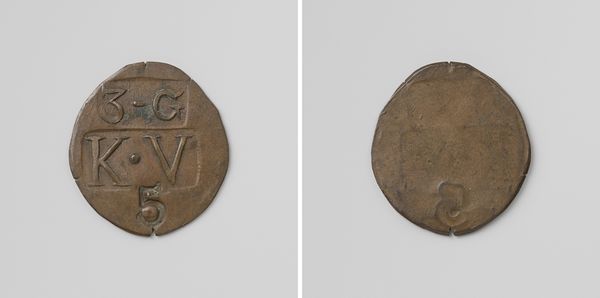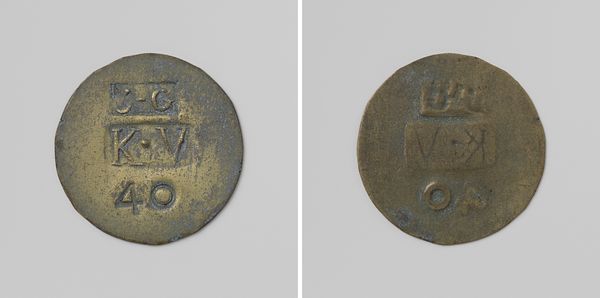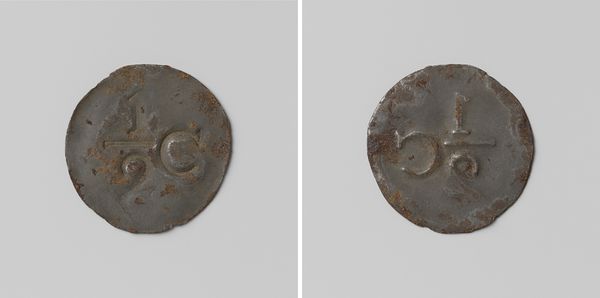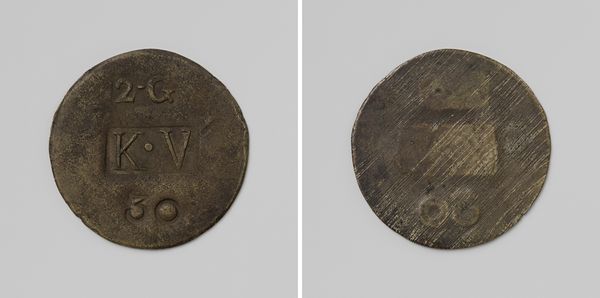
Kolonie Veenhuizen, huismunt geslagen op last van de Maatschappij van Weldadigheid ter waarde van tien cent 1818 - 1859
0:00
0:00
anonymous
Rijksmuseum
print, metal, relief
# print
#
metal
#
sculpture
#
relief
#
ceramic
Dimensions: diameter 2.7 cm, weight 2.59 gr
Copyright: Rijks Museum: Open Domain
This is a coin from the Kolonie Veenhuizen, commissioned by the Maatschappij van Weldadigheid. Though undated, we know it was created sometime in the 19th century. The coin's existence speaks to the peculiar social experiment that was Veenhuizen, a Dutch colony established to rehabilitate the poor and vagrant through agriculture and industry. Instead of actual money, the residents were given these tokens, which could only be used within the colony, thus controlling the local economy. It symbolizes the paternalistic, almost carceral approach to poverty alleviation of the time. The very imagery is a power statement by the institution, reminding residents that even their money isn't truly their own. To fully understand pieces like this, it’s important to dive into the archives of organizations like the Maatschappij van Weldadigheid and explore the social and economic policies of the period. This reveals a history of well-intentioned but often misguided efforts to address social inequality.
Comments
No comments
Be the first to comment and join the conversation on the ultimate creative platform.
